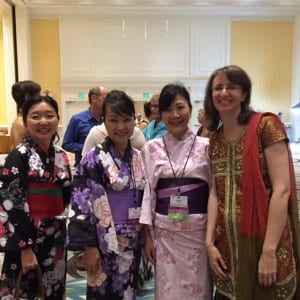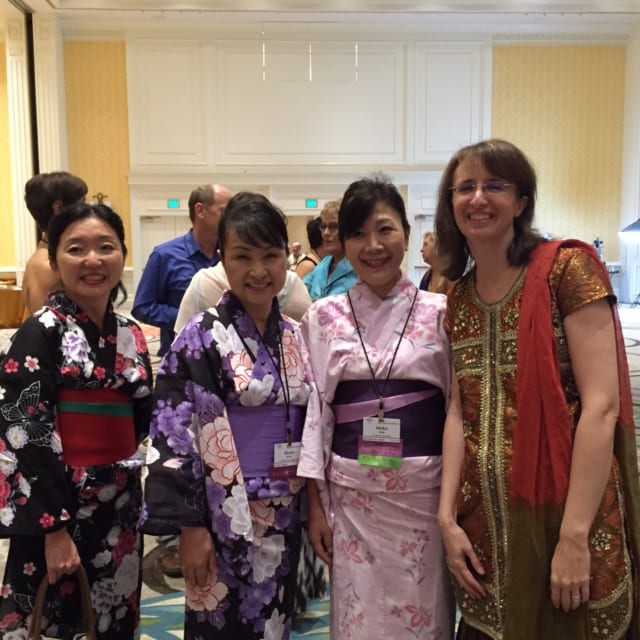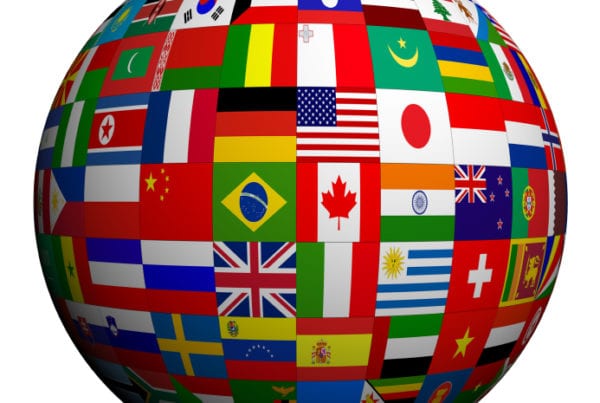 Global leaders today have it tough; exciting, but tough. Whether they run a small business or a Fortune 1000 company, the skill set they need today compared to ten years ago is staggering. Their expertise in their area (technology, finance, etc.) is no longer enough.
Global leaders today have it tough; exciting, but tough. Whether they run a small business or a Fortune 1000 company, the skill set they need today compared to ten years ago is staggering. Their expertise in their area (technology, finance, etc.) is no longer enough.
Now they need to be highly adept with multiple abilities such as keeping up with rapidly changing markets (think China and India), retaining and developing talent, leading by influence, managing remote staff, communicating virtually, serving diverse customers, and getting the best from their cross-cultural workforce.
In my journeys from company to company, I see leaders at various places on this spectrum of global agility. Some seem to inspire their teams or customers and some consistently miss opportunities, but most are in transition. They realize they need these new skills but are unsure how to let go of their comfortable or familiar ways of thinking, especially when those ways have served them well in the past.
Imagine a senior HR leader from the U.S. named Karen sits down to a meeting with her team of ten. Her team consists of eight U.S. Americans (two African American men, two white women, and four white men), one Indian man, and one German woman. She looks at them just as the meeting starts.
She thinks to herself, “I am so fortunate. I see so much talent in this team! It took me a long time to find them, but now that I have I’m going to do what it takes to retain them. I love that the team is diverse, but I really don’t see color. I see these people equally and I respect their skills, whatever culture they are from. We’re all here for the same goal – to get the job done.”
With this mindset from Karen, the meeting begins. Her respect for the team is evident. Her belief in their talent is as well. So what’s missing from her point of view? After all, global leaders, whether they are solo business owners or managing a team of hundreds, need the ability to forge common ground with people who are different from them. Right?
Right! That, however, is not where the story ends.
Karen says she doesn’t see color and that she respects the individuals, whatever their culture. Color and culture, however, are still there whether the leader acknowledges them or not. And they are likely having an impact, whether Karen is aware of it or not.
The ability of a leader to forge common ground across teams, customers, cultures, or organizations is critical. But some do so at the expense of recognizing deeper differences that affect the way people work, communicate, and make decisions. The ability to see an individual for who they are is also a vital skill, but every individual was socialized into a culture, and that culture had and always will have an impact on the way they operate.
In other words, global leadership does not mean either seeing people’s individuality or seeing their culture. It means seeing both.
Karen’s task is to learn more about her own culture so that she does not inadvertently apply her U.S. cultural lens to all intercultural interactions. She might study core U.S. values such as independence and freedom of choice. She might familiarize herself further with U.S. history. Through this process she will learn what kind of influence culture exerts on her, and therefore will be more likely to recognize cultural influences in others.
She might then show more curiosity about the cultures and backgrounds of her team members. What languages did her international colleagues speak in their native country? What values are important to those cultures? What kind of diversity of thought can she gain from the team’s backgrounds?
Academic and consulting institutions have subjected diversity in the workplace to rigorous analysis, and the conclusion is almost always the same: Companies with more diverse workforces perform better financially. See this article for a summary: http://www.mckinsey.com/business-functions/organization/our-insights/why-diversity-matters
To lead and succeed in diverse environments, you do not need to sacrifice your own cultural values or way of communicating. With the power of “both/and” you will add to your repertoire, discover new ways of communicating, and grow your authentic self. This growth will pave the way to inclusive leadership where you get the best from everyone.




